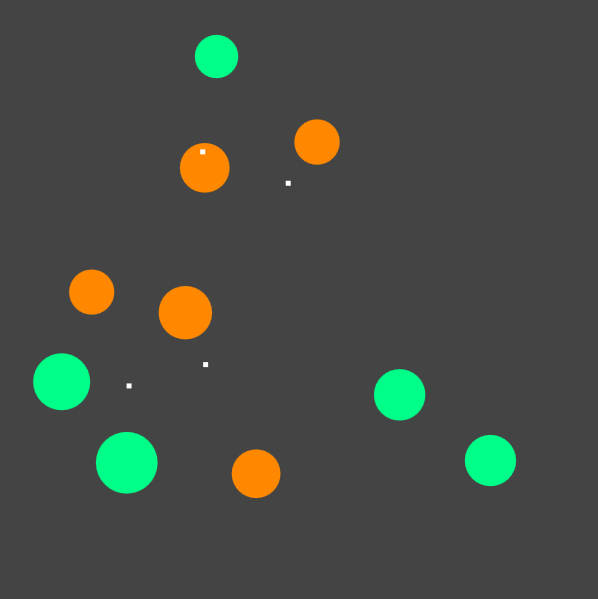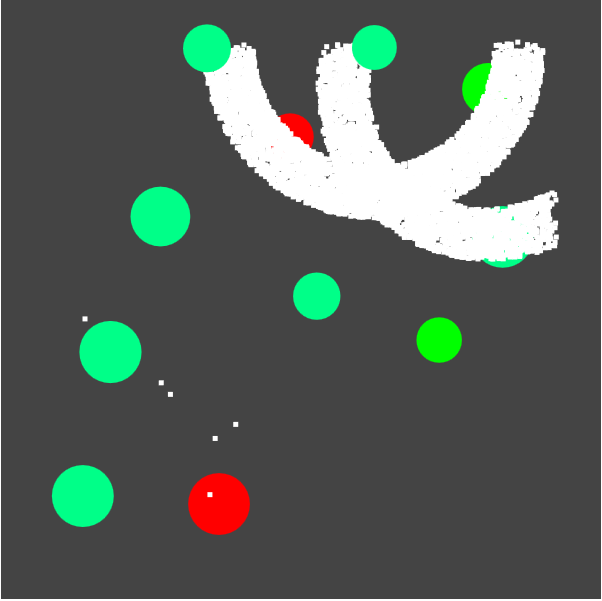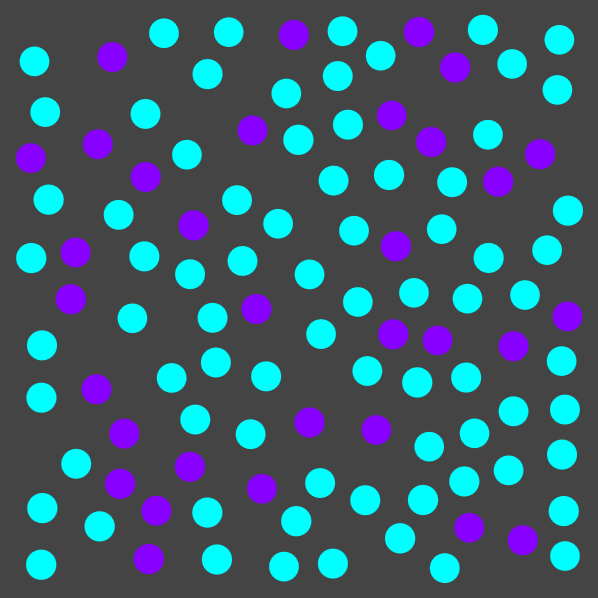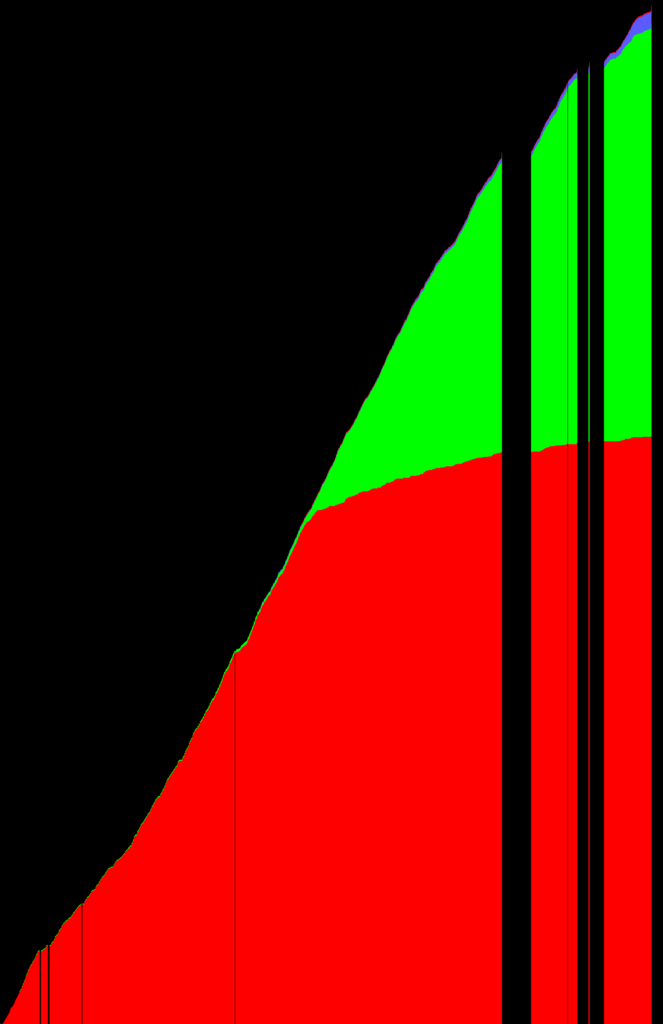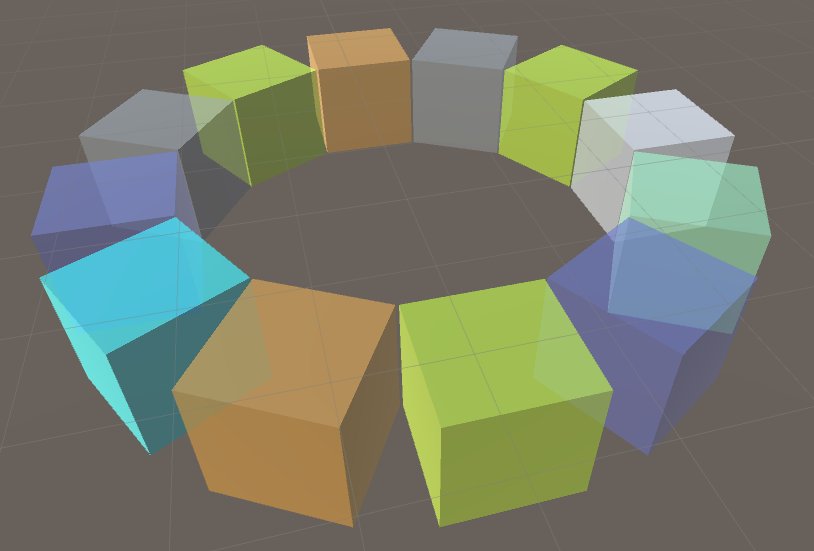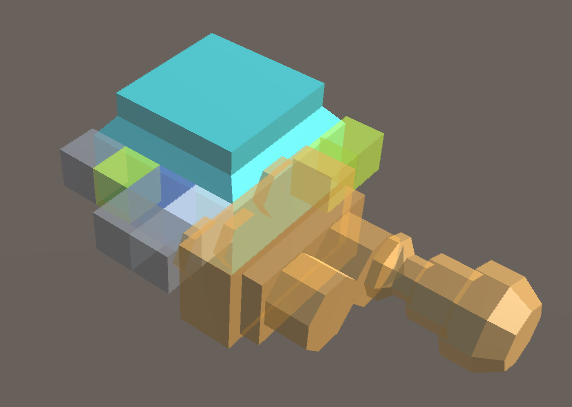Campaign Summary | Session 2 →
Fairmeadow Fair is a scenario that I use to introduce people to tabletop role-playing games. My goal is to provide a wide range of activities so players can engage with the things that interest them: parties, conspiracies, thefts, fights. I don’t want people’s first introduction to role-playing games to be a fight to the death against implacable foes. I’ve run this scenario for several groups, but this group asked me to return and make the one-shot into a campaign.
Our heroes are Lucia, a risk-averse female human Paladin, and Gleador, an impulsive & creative male elf Druid. They are headed to the town of Fairmeadow for the famous Fairmeadow Fair, which attracts people from all across the region. There will be good food, entertainment, new people, and plenty of excitement. I show them a sketch of the city, with major landmarks like the main roads, fairgrounds, town halls, and both inns. Gleador wants to check the perimeter, so they go clockwise, right past the Brace of Pigs inn.
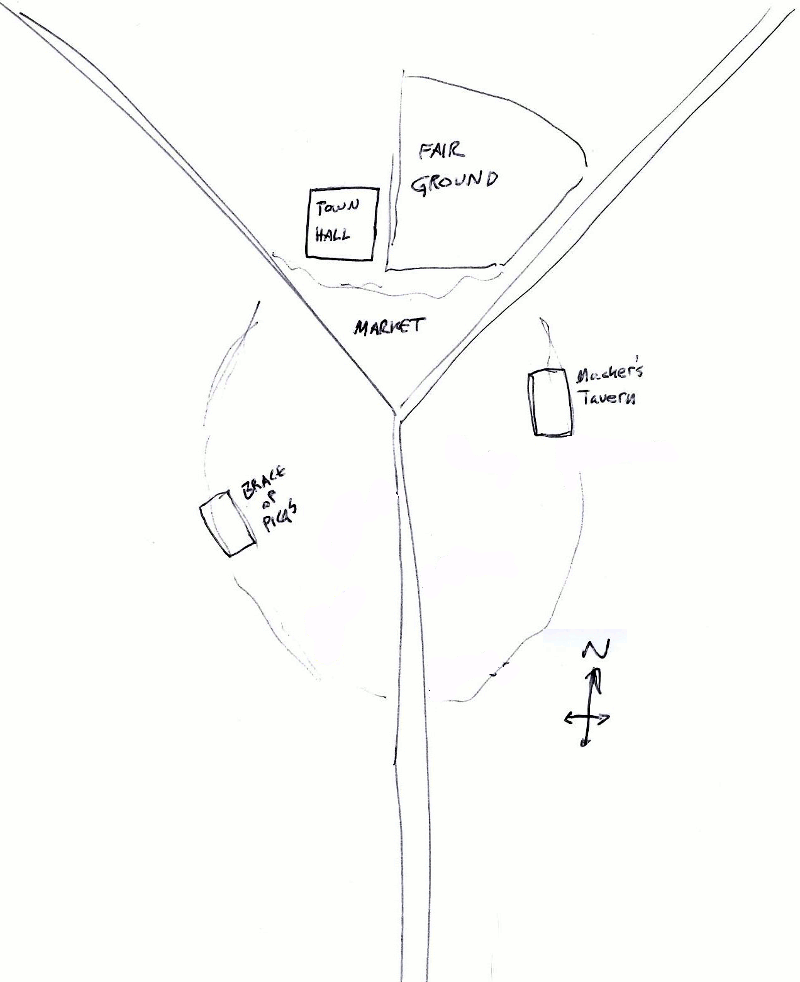
There’s a commotion at the Brace of Pigs and an Elf wearing a big backpack bursts out of the back door and runs out into the fields, away from town. Jimmy, son of the innkeeper, gives chase with a broom, yelling, “Stop, thief!” Our heroes try to stop the Elf with the backpack, but he turns into a bull and plows past them! Gleador is a thing-talker, so he can shape-shift into things of the earth as well as animals. He attempts to turn into wheat and entangle the bull, but he fails and ends up buried to the neck in dirt. Lucia grabs a rope from her adventuring gear & attempts to lasso the bull, but is tangled in the rope and falls over. Jimmy & his father Hobert catch up & extricate our heroes.
Lucia feels she must redeem herself from this embarrassing failure by capturing the bull. Hobert explains that the man pushed his way into the inn’s storeroom and stole his special wine. The inn has a tavern in the front, a kitchen & storeroom in the back (that’s where the bull-elf exited) and rooms for rent upstairs. Each year at the start of the Fairmeadow Fair, the Brace of Pigs Inn serves this special wine, and at the end of the fair, they bottle the next year’s batch. It’s a point of pride for the inn and a tradition for the fair, so Hobert is very upset!
Gleador excuses himself (he doesn’t want everyone to know he’s a shape-shifting Druid) and turns into a crow. He mobilizes the crows in town to fly out over the fields and look for the bull elf. They can cover a lot of area, but will take a few hours to search.
Lucia swears herself to a quest: she will recover recover the wine! Her god grants her immunity to piercing weapons and senses that pierce lies but in return, she must demonstrate temperance. Even if the wine is recovered before the fair is over, she cannot eat any fair food or drink any alcohol (including the wine she’s trying to recover!) Since the bull-elf knew exactly where to get the wine, Lucia suspects an accomplice, so she starts questioning people in the tavern. It’s crowded, since even people who aren’t staying here have come for lunch. She overhears a woman excuse herself & leave the tavern & knows that her excuse was a lie: she wanted to avoid Lucia & her questions. Lucia follows her.
The woman heads to the busy marketplace, but is unable to lose Lucia in the crowd. Lucia asks her if she knows the thief. The woman denies it, but Lucia knows she’s lying, so she grabs the woman. The woman makes a scene, yelling at Lucia & slapping her across the face. Lucia is forced to back off by angry onlookers, but later corners the woman in a more private place. Gleador has turned into a dog & recruited other stray dogs in town by promising that Lucia will give them all her fair food this weekend. The dogs form a perimeter around the strange woman, but she turns invisible and runs off!
GM: Wait, you still have that boon that pierces illusions, so you can still see her.
Lucia: Yup. I act surprised, then follow her.
The crows report that the bull is in a swamp some miles to the east, and that’s where the strange (and apparently magical) woman is heading. At the edge of the swamp, the stray dogs balk. The swamp seems unnatural and they are scared of it. Gleador sends them back to town to guard the inn and report any strange scents. He attaches a note to one of the dogs explaining that he and Lucia are on the trail of the thieves and to please give these dogs some scraps.
This delay has let the woman get far ahead, so Lucia has to follow her tracks through the swamp instead of just watching her walk across the fields. Lucia’s not very good at that & blunders into some quicksand. Gleador turns into a tree with an overhanging branch so Lucia can pull herself out. As they are struggling to get free, the woman appears, having heard the commotion.
Gleador: I continue accessing the situation as a tree.
The woman fires a lightning bolt at Lucia, which misses, but hits Gleador, setting his branches on fire. Lucia grabs a burning branch and wields it against the woman, who meets her with a dagger.
Gleador: I think I attack her at this point.
Gleador turns into quicksand to overwhelm the mysterious spellcaster. The flaming tree bends and pours over her, the flames going out as the branches turn into sand. The sand engulfs her, knocking her over, and reforming into Gleador’s Elf form pinning her in a submission hold. She knows she’s beaten, so she stops resisting physically, but yells and curses the town and our heroes. “It’s not enough that you pillage my crops and claim them as your own, but now you invade my home and attack me!” Our heroes thought that she and the bull elf were the ones doing the pillaging, so they ask for clarification. It turns out that the secret ingredient in Hobert’s special wine is a rare herb that Samantha (that’s the witch’s name) grows here in the swamp. Hobert has been sneaking in and tearing out the herb, and Samantha stole his wine back as revenge.
Lucia is moved by their plight. Lucia & Gleador bring the wine, Samantha, and Ferdinand (that’s the bull elf) back to the inn. They return the wine to Hobert in the tavern, in front of all his customers, and give Samantha and Ferdinand credit for the wine’s unique taste. The customers cheer Samantha and Ferdinand because they love the wine. Hobert can’t say anything against Samantha & Ferdinand lest his wrongdoing be revealed. But he’s got his wine back and the yearly tradition can proceed, so he’s happy too. Everyone’s happy, except Lucia, who was rewarded with a bottle of excellent wine which she isn’t allowed to drink.


